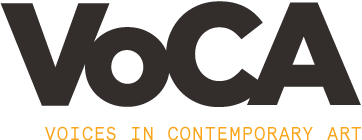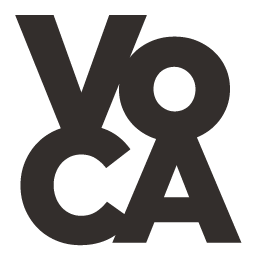Editor’s Note
Welcome to the Spring 2018 issue of VoCA Journal, the second in an occasional series focusing on media arts. Contributors to this issue inhabit the sometimes overlapping roles of artists, collectors, art historians, and conservators; each is a stakeholder with a deep interest in the history, research, display, and preservation of modern and contemporary media arts.
Returning VoCA Journal author Gloria Sutton (Associate Professor of Contemporary Art History and New Media at Northeastern University) offers a compelling reading of Pipilotti Rist’s ouevre that is grounded both in medium specificity and socio-political context. “The feminist strategy within Rist’s work,” Sutton writes, “is not limited to the fact that the artist aims the fixed camera on the biologically female body; it also extends to how she overturns the mechanisms of recording technology and the narratives around mastery and control.” In her review of the ICA Boston’s current exhibition, Art in the Age of the Internet: 1989 to Today, Megan Driscoll (PhD candidate in contemporary and African American art at the University of California Los Angeles) attends to the conflicted responses that the featured artists and exhibition curators alike express toward the ubiquity of computer networks, unpacking exhibition subthemes ranging from “states of surveillance” to “performing the self.” Like Sutton, Driscoll emphasizes materiality and social impact in her discussion of the works on view. She credits the exhibition with “grounding our understanding of the age of the internet not through an embrace of its technologies, but through a careful excavation of the realities it has shaped and the realities out of which it has emerged.”
Several contributions to this issue address the ways that engaged stewardship of media works has become an urgent issue, both pragmatically and conceptually, and illuminate some professional training opportunities for aspiring media conservators. Peter Oleksik (Associate Media Conservator at the Museum of Modern Art) presents a brief history of the field of media art conservation in the United States, highlighting key grass roots organizations like Bay Area Video Coalition, seminal publications such as Radical Software, and landmark conferences including Tech Archaeology (2000) and the most recent AIC conference (2017) which included a panel celebrating the 20th anniversary of the Electronic Media Group (EMG). Oleksik concludes that the dialogue of cross-disciplinary “voices and exchange of ideas, both old and new, are necessary to further the exploration and preservation not only of video, but also of the works under the wider umbrella of time-based media, such as software, performance, and installation.” Drilling down on the need for specialized training in media art conservation, Joanna Phillips (Senior Conservator of Time-based Media at the Solomon R. Guggenheim Museum) and Alexandra Nichols (Sherman Fairchild Foundation Fellow at the Metropolitan Museum of Art) discuss the elements that best support a young professional’s growth in the field, including achieving technological fluency and adjusting to cross-disciplinary and cross-departmental workflows in their home museums. Echoing Oleksik, they agree that lessons learned when collaborating with media artists on the documentation and preservation of their work apply to the care of performance and installation art as well.
Patrons of varying types play essential roles in the development emerging art forms. In this issue Kate Lewis (Agnes Gund Chief Conservator at The Museum of Modern Art) interviews Carl Thoma (art collector and philanthropist) about the Carl and Marilyn Thoma Art Foundation’s activities. Thoma explains the genesis for his collection and strategies that his team has developed for maintaining digital artworks. “Within the first six weeks of acquiring a digital work, we install it and test it,” he said. “Some of the artists say you need to run it every so often, almost like a car.” Thoma also shares the thinking behind the award the foundation has recently established to support writing on media arts. This issue rounds out with a contribution from media artist Marshall Reese, who charts the history of another kind of arts patronage, the unique public/private partnership called the Standby Program. Founded in New York in the early 1980s, Standby innovated a model of resource sharing that provided the arts community extraordinary access to the private sector. Standby partnered with one of the largest broadcast television studios in Manhattan to provide artists access to editing equipment on short notice (hence the name “standby”) typically during off hours. Reflecting the concerns raised by several of our other contributors concerning preservation strategies for media art, Reese explains how Standby’s focus has recently shifted from providing access to production equipment to putting postproduction preservation tools “within reach of artists and independent filmmakers.”
Robin Clark


